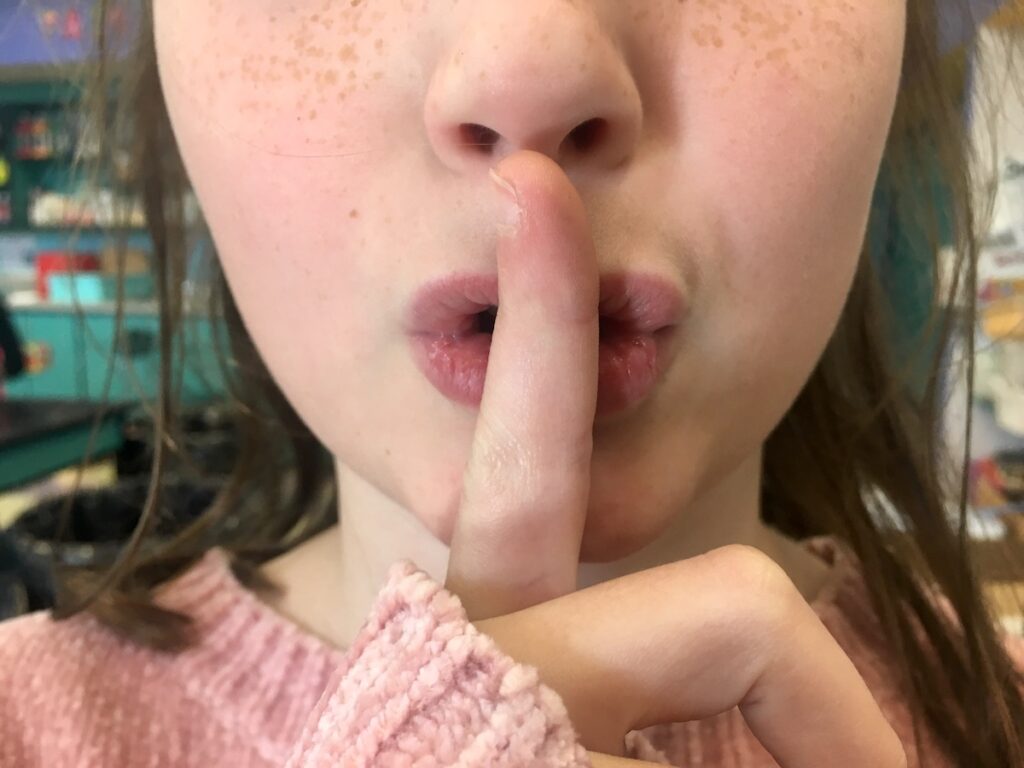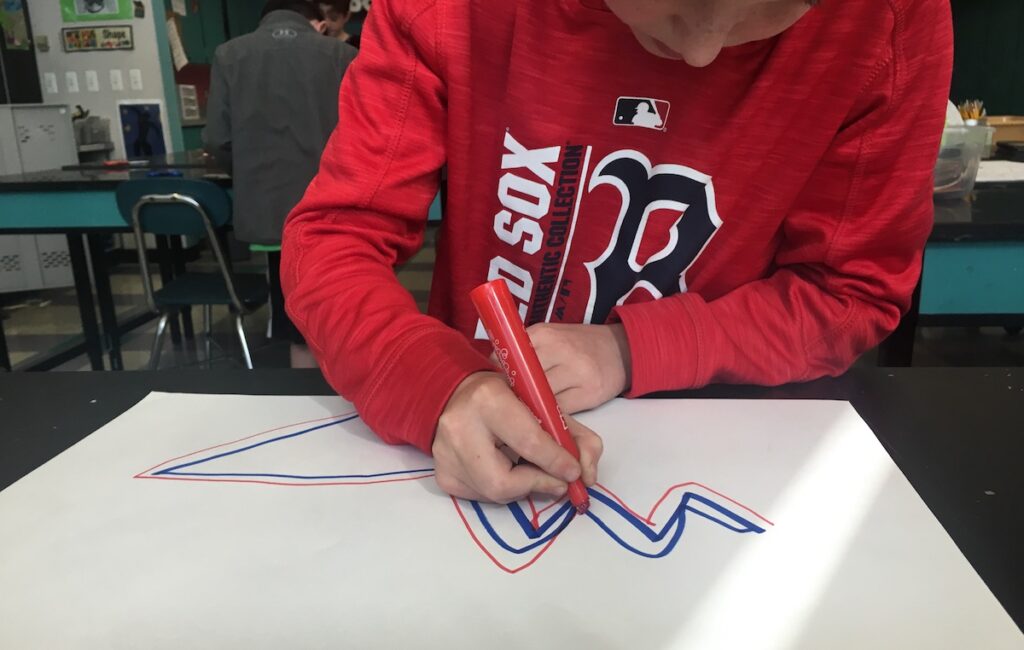Silence is often underrated as a tool in teaching and learning. Maybe this is because it’s difficult to quantify the impact silence has on learning. How can you measure what you cannot hear?
Art classrooms are often loud and boisterous, and there is nothing wrong with the enjoyment and engagement of noisy learning! But, have you ever thought about the role noise and silence play in your art room?
Often silence is misconstrued as a lack of engagement. In fact, silence is commonly used as a punishment for unengaged classes. As schools work to understand how mindfulness can play a role in reducing stress and increasing student engagement, it’s important to look at the role silence plays in your classroom.
The Role of Teacher Voice
”Silence…is often problematized in a classroom situation, with the underlying implication that classrooms are for talking–as long as the talking is under the control of the teacher.” Ros Ollin
Before you talk about teaching with silence, it’s important to look at the role of teacher voice in the classroom. As teachers, we often feel it’s our job to lead the conversation and impart knowledge to our students. In fact, when it comes to lesson planning, demonstrations, and critiques, teacher voice is often valued above all else.
We ask students to listen silently while we demonstrate techniques. We take lead roles in discussions by presenting topics, calling on students, asking them to elaborate, and debriefing their answers. We take the reins in student conferences, provide rubrics written in the teacher’s voice, and interrupt students’ working time to ask them how they are progressing.
Take a moment to think about the role of teacher voice in your classroom:
- How long are your demonstrations?
- Do you leave space for students to work without your verbal input?
- Do you feel guilty or uncomfortable when you’re not giving verbal feedback?
- Do your students lead or do they follow your lead during student conferences and critiques?
These are all important things to notice. Although completely removing teacher voice from a classroom isn’t the goal, how might reducing it benefit your students? Think about the impact of your voice on student independence, idea generation, and focus.

Using Silence to Teach
Many of us may remember silence in school negatively. An uncomfortable silence with an upset teacher, the punishment of silent work time, or being silent because we were afraid to speak up or didn’t know the answer. This is not the kind of silence we want to foster, but it is often the silence that exists in schools. How can we change the role of silence in our own classroom?
There are many ways to incorporate silence into your classroom. On the one hand, talking can impart information for those who are listening to our words. On the other hand, silence can be inclusive for LEP/ELL students, show respect to introverted students, and model engaged studio behavior.
Here are some places to consider using silence as a teaching tool:
- While demonstrating a new tool or technique, make sure learners can see you as you silently demonstrate or use minimal language.
- Present artwork silently to students for discussion, and provide them active silent time to engage with and process the content and meaning.
- Provide purposeful silence before calling on students to answer and listen fully without responding verbally.
- During work periods, discuss with students how silence can promote focus and deep concentration. Offer them 5 minutes of silent working time to settle into their art. Remember not to interrupt with teacher voice!
- During student-teacher conferences, be aware of how much space your voice takes up. How can you allow for more independent student voice?
- While students are working or thinking, don’t use this as a time to share information. Resist the urge to break their concentration.
- Schedule silent working days once a month. Let students know in exchange for silent invested working, you will not be giving any directions! Greet students at the door with a silent working day sign and use eye contact and a smile to greet them.
You may be thinking, “This would never work in my room!” It’s true, a respectful culture of silence may need to begin as a whole group discussion and a studio habits contract. It also may take some time and practice for students to appreciate and become invested.
The Benefits of Silence
“Children in today’s classrooms have virtually no time to simply dream, wait, think, ponder, or learn to be still.” David Geoffrey Smith

The benefits of respectful silence are far-reaching. When we allow students time to attend to their own thoughts, students can develop a better understanding of themselves and their work. According to a recent study in The Cambridge Journal Of Education, silence in the classroom can often be undervalued during teacher observations because silence is seen as lacking educational value.
If you choose to use silence in your classroom, here are some educational benefits you can share with students, parents, and administration.
Silence can be used to:
- Add dramatic effect to a lesson.
- Allow students to think at their own pace (not that of the teacher or their peers).
- Promote focused and improved motor control.
- Increase relaxation and calm.
- Give space for creative, intuitive, or reflective thinking.
- Promote access to the creative and non-verbal right brain.
- Promote equality among non-verbal, introverted, or LEP/ELL students and their peers/teachers.
- Create intimacy in large communal groups, like that seen in a yoga class or vigil.
As teachers, we are “on” all day long. Perhaps it may be time to take a look at how silence can improve your classroom environment. Start by taking a look at your teaching style and how silence can play a positive and active role in your teaching. While promoting this type of learning in your classroom, take a look at how you relax, reflect, and regenerate using silence in your own life!
How do you use silence in your classroom in positive ways?
Do you agree or disagree that silence can benefit student learning?
Magazine articles and podcasts are opinions of professional education contributors and do not necessarily represent the position of the Art of Education University (AOEU) or its academic offerings. Contributors use terms in the way they are most often talked about in the scope of their educational experiences.





